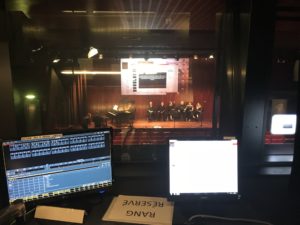One of the great joys of bringing Grétry’s Émilie back to life has been researching the social, cultural, and political context it was created in, including how Grétry’s work impacted the musical landscape of his time.

Genius does not arise in a vacuum. Mozart, often considered thegreatest musical genius of the late-18th-century, was no exception. A study of Émilie and other operas by Grétry shows that Mozart’s work owes much to his French counterpart. Mozart borrowed harmonies, rhythms, and sometimes entire melodies from Grétry’s operas for many of his works, including The Abduction from the Seraglio and The Marriage of Figaro.

The surprising thing about this borrowing is not that it occurred, but that it remained largely unnoticed by scholars in the first two centuries of Mozart studies. There are reasons for this: French opera and Viennese music scholars often occupy different sonic worlds, and many of Grétry’s dozens of operas were not recorded until the last two decades. Recent digitization efforts by the Bibliothèque Nationale de France have made Grétry’s scores more accessible to scholars, and a wave of scholarship on borrowing is likely to follow.
That Grétry would be a model for Mozart is not surprising. The two met when Mozart was a child prodigy touring Europe, and Mozart is believed to have seen several Grétry operas during a later residency in France. Mozart also knew Grétry’s opera Zémire et Azor – like Émilie, set in the Middle East – from a production in Vienna. In fact, Mozart was in love with (and courting) its star soprano, Aloysia Weber, and ultimately married Aloysia’s sister Constanze. His interest in the opera was so great that Mozart copied its piano-vocal score by hand. The same “Eastern” harmonies by Grétry in Zémire et Azor and Émilie were copied by Mozart in The Abduction from the Seraglio…which, itself, has a plot that is in so small way derived from – some would say ripped off from – Émilie.


 Why is Really Spicy Opera is performing a Grétry opera in 2020? And how did the 2020 tour
Why is Really Spicy Opera is performing a Grétry opera in 2020? And how did the 2020 tour